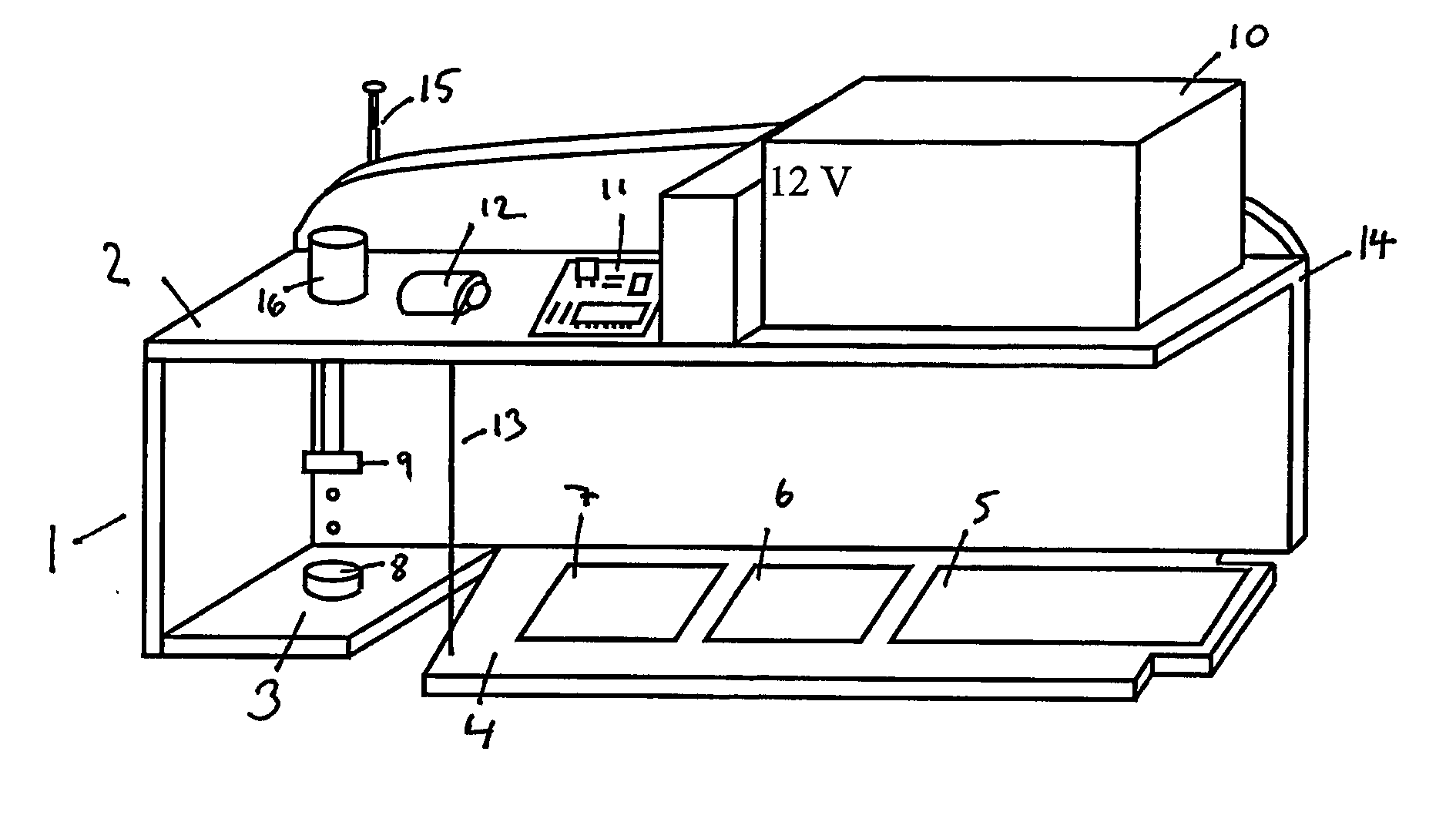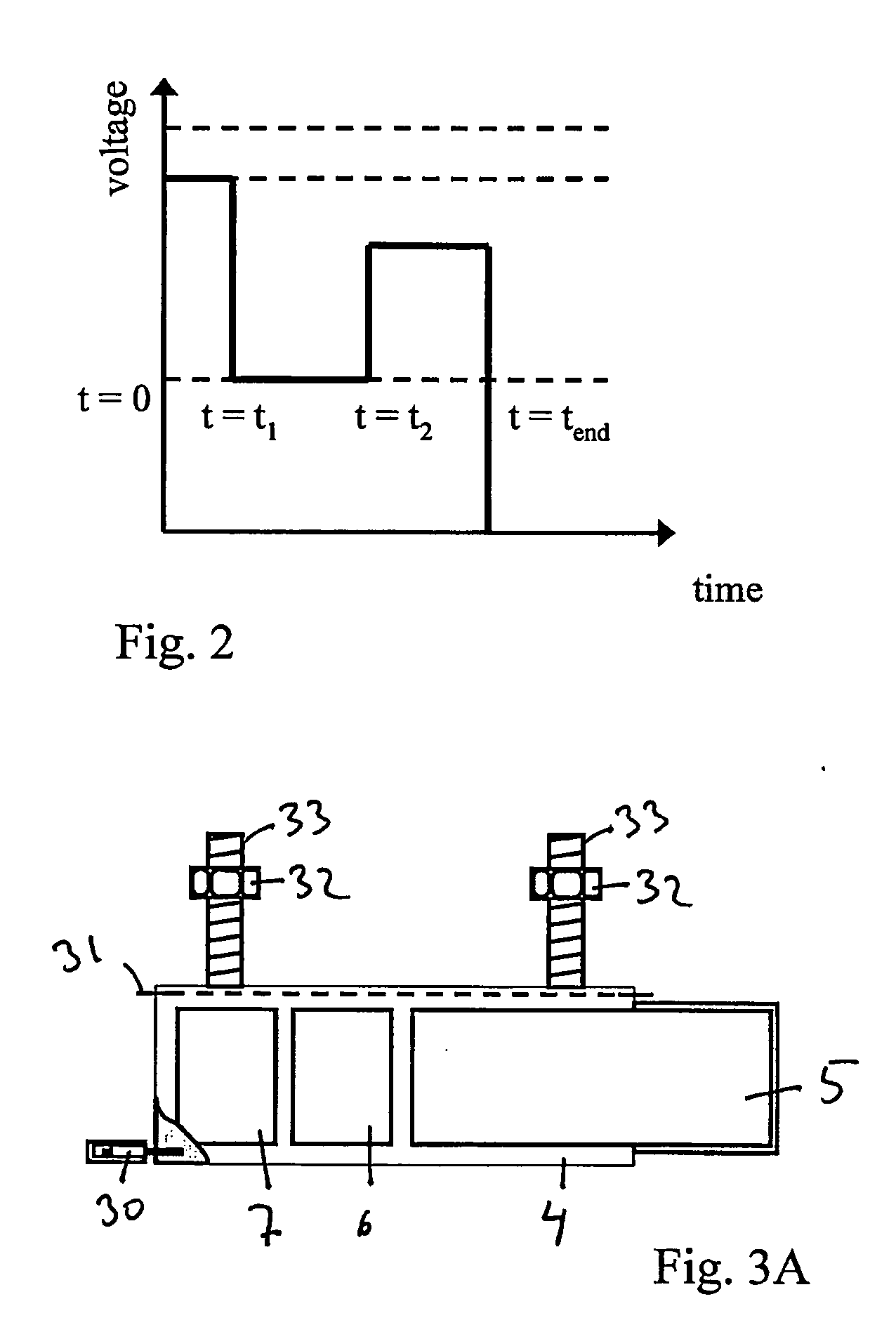Electrocution animal trap with a sender
a technology of electrocution and animal trap, which is applied in the direction of animal traps, electric shock equipment, insect catchers and killers, etc., can solve the problems of not being able to deal with the trap described above, the electrocution of noxious animals is a well-known problem, and the animal touches the electrodes inevitably, so as to achieve the effect of avoiding electrocution
- Summary
- Abstract
- Description
- Claims
- Application Information
AI Technical Summary
Benefits of technology
Problems solved by technology
Method used
Image
Examples
first embodiment
[0004] In a first embodiment, the above mentioned problem has been solved by the present invention by providing an electrically powered animal trap, which comprises
[0005] a set of electrodes for electrocution of the animal, and
[0006] means for communicating a surveillance signal between the trap and an external surveillance unit.
[0007] Due to the means for communicating a surveillance signal between a trap and an external unit, the keeper of the trap may know the condition of the trap without direct inspection of the trap. The trap may thus be left unattended for a long period time, where the trap keeper can rest assure, that the trap is fully operational.
[0008] The trap may comprise a bottom section with an upwardly extending sidewall, a top section, and at least one entrance. The entrance may be either in a sidewall, in the top section of the trap, in the bottom section of the trap, or anywhere else. Upon entering the trap, the animal enters a chamber, where a bait or lure may ...
second embodiment
[0033]FIG. 3A shows the trapdoor 4, where instead of using a motor 11 and a string 13, the actuation of the trapdoor is an electromagnetic switch 30 adapted to open upon a signal from the electronic circuit 11. Due to the weight of the electrocuted animal, the trapdoor opens by pivoting around a pivot tap 31, and closes after release of the animal due to counter weights, here exemplified by a threaded bolt 33 and a nut 32.
third embodiment
[0034] In FIG. 3B and 3C the trapdoor is shown. Here a solenoid 202 Is used to open and close the trapdoor. The solenoid may be fixed to the trap using fixation means 200 and 201. By activating the solenoid, rod 203 Is pulled into the solenoid, which through a mechanical coupling to the trapdoor, opens the trap door, as shown In FIG. 3C. Using a solenoid may e.g. increase the control of the trapdoor. For example it may be possible to shake the trapdoor to make sure the animal has fallen off, or to clear the trapdoor from debris or dirt on the electrodes or the trapdoor in general.
[0035]FIG. 4 and 5 show two examples of trap set-ups. In both Figs. the trap 20 is raised above the surroundings, and access to the trap chamber is ensured by a ramp 21. In FIG. 2 the trap is placed on top of a receptacle 22, into which the animals are dumped after the electrocution. Where FIG. 4 present a trap set-up that can be used in many different locations, e.g. a store-house, a barn or a field, FIG. ...
PUM
 Login to View More
Login to View More Abstract
Description
Claims
Application Information
 Login to View More
Login to View More - R&D
- Intellectual Property
- Life Sciences
- Materials
- Tech Scout
- Unparalleled Data Quality
- Higher Quality Content
- 60% Fewer Hallucinations
Browse by: Latest US Patents, China's latest patents, Technical Efficacy Thesaurus, Application Domain, Technology Topic, Popular Technical Reports.
© 2025 PatSnap. All rights reserved.Legal|Privacy policy|Modern Slavery Act Transparency Statement|Sitemap|About US| Contact US: help@patsnap.com



